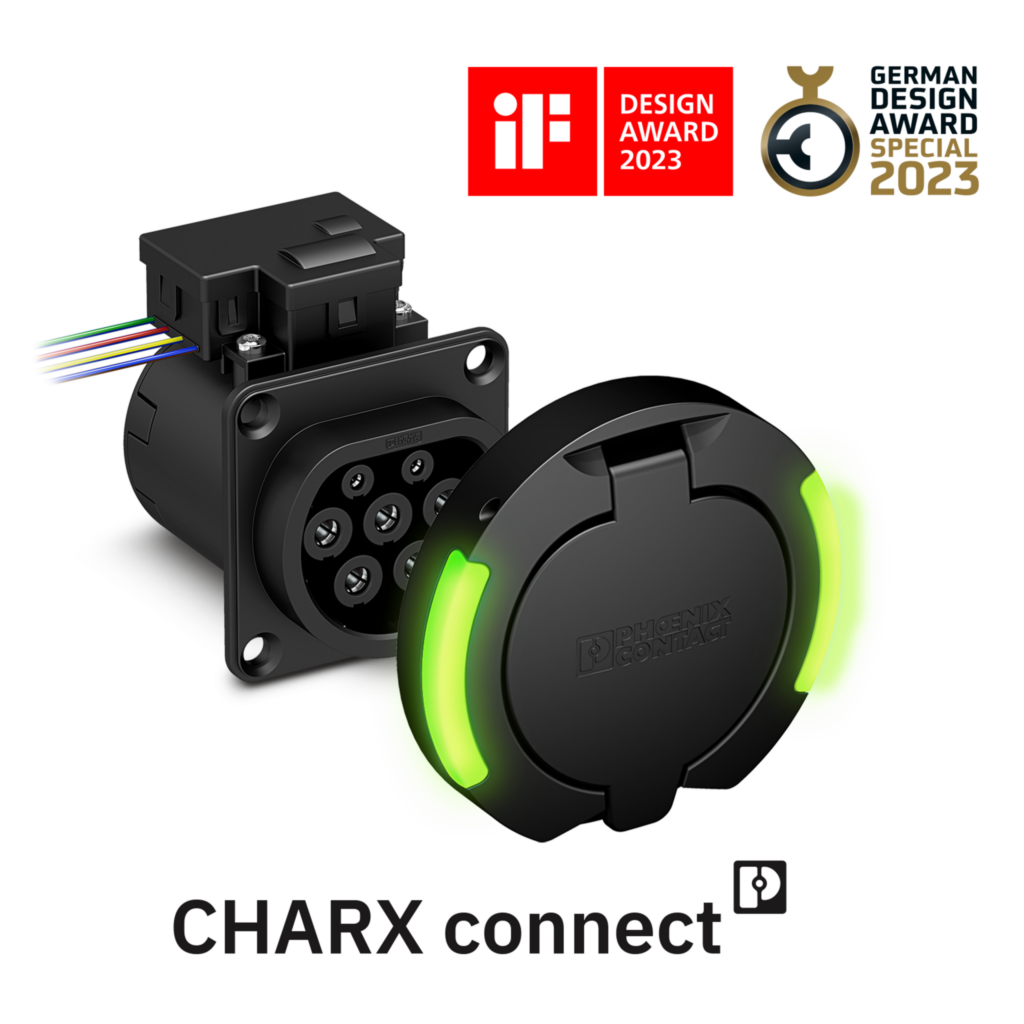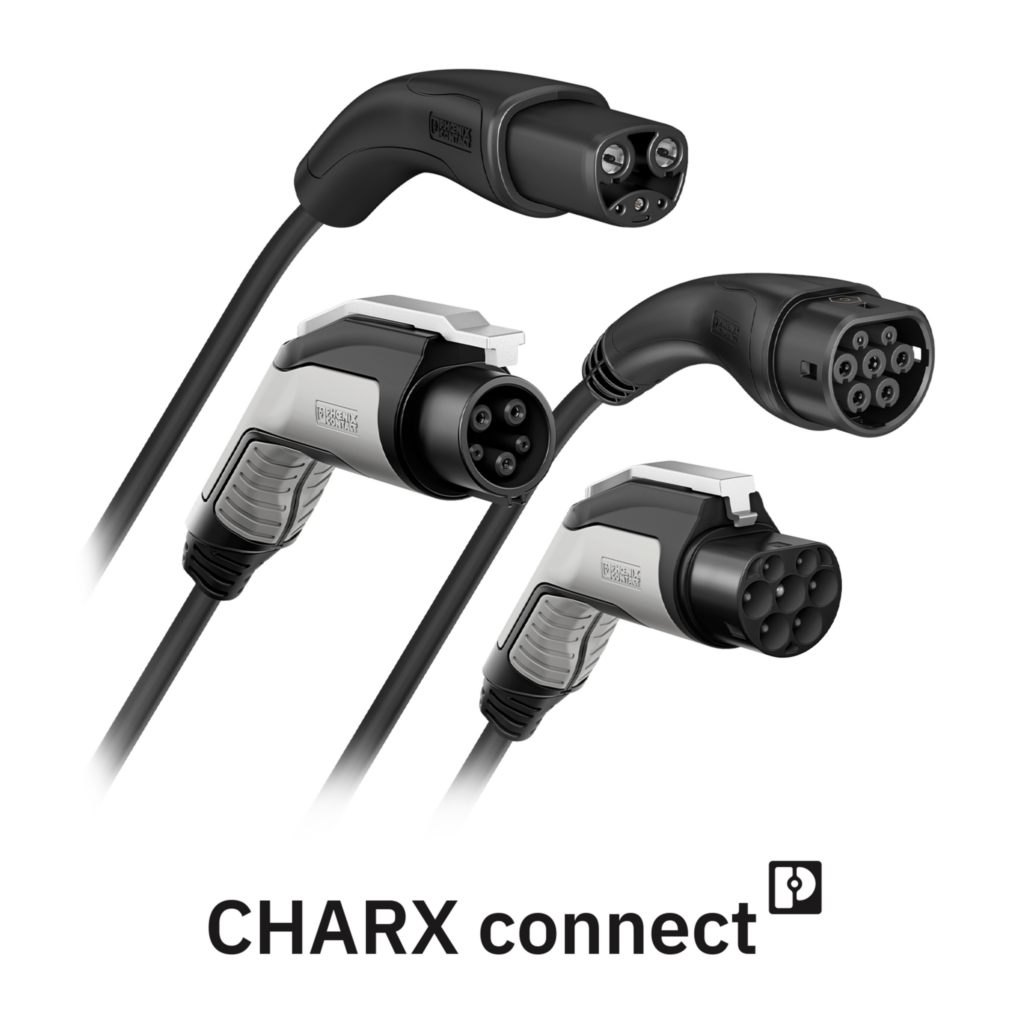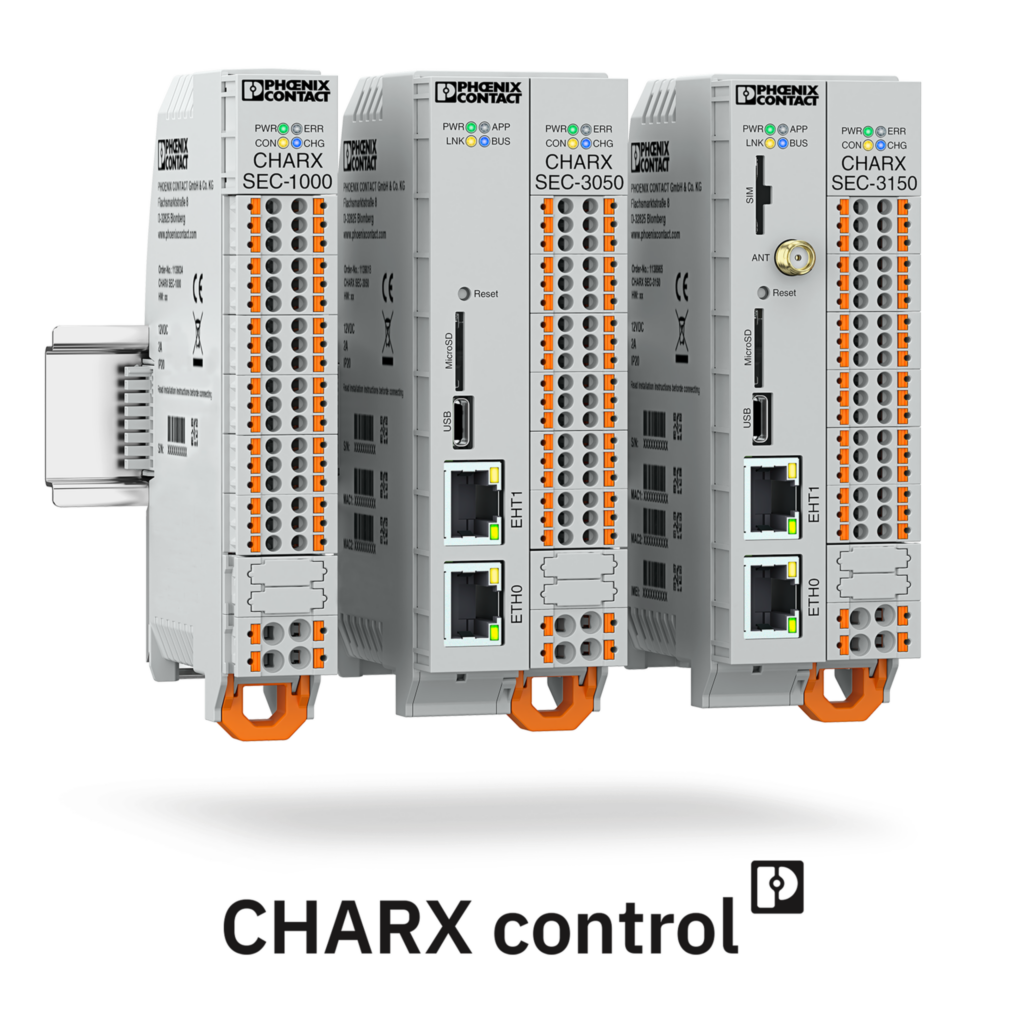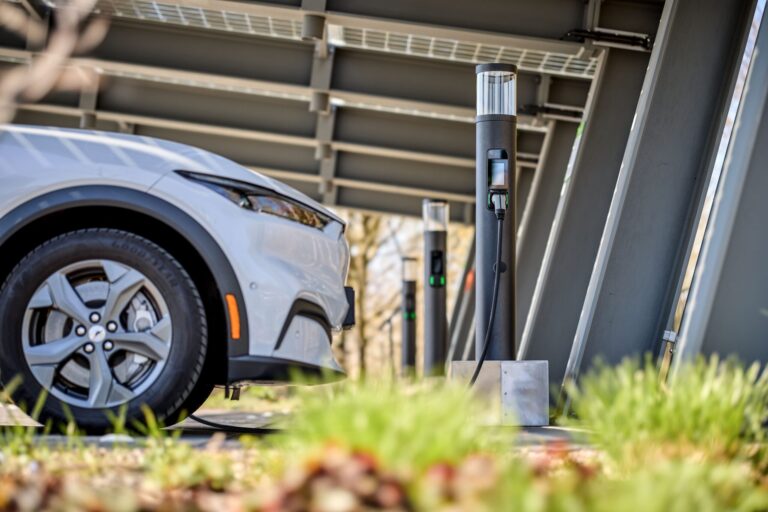Today, e-mobility is a central component of sustainable mobility. But how can AC charging of electric vehicles be done safely, efficiently and gently?
To answer this question, we will first explain the basic structure of a charging station.
How does a charging station for electric vehicles work?
A charging station for electric vehicles consists of several important components that work together to ensure a smooth charging experience. The structure of an AC and DC charging station can be divided into different functional units:
- Supply and Protection: This functional unit ensures that the charging station is supplied with power safely and reliably.
- Charging: This is the actual charging process in which energy is transferred to the vehicle battery.
- Connection: This unit represents the electrical connection and connection technology within the charging station and to the vehicle.
- Control and monitor: This functional unit controls the charging process and monitors important parameters so that everything runs properly and safely.
- Networking and communication: This unit enables communication between the charging station, users and other systems, such as a central management system.
A comprehensive classification of the common charging standards and plug types is clearly explained in the basics of e-mobility charging technology.
How do I charge electric vehicles safely, efficiently and as gently as possible?
The electricity required for the electric vehicle is fed into the charging station via the functional unit “Supply and protect” , while the functional unit “Control and monitor” regulates the charging process.
In the charging process itself (“Charging” functional unit), a distinction is made between the two basic charging types: AC charging (alternating current charging) and DC charging (direct current charging).
AC charging in the public and private sector
AC charging is mainly used in the private and semi-public sector, i.e. at home chargers or at stores, restaurants or hotels. The simpler and more cost-effective concept of AC charging offers slow to medium-fast charging processes with charging currents in the range of 6 to 32 amps or with charging powers of 3.7 to 22 kW.
AC charging with a view into the vehicle:
A special feature of AC charging is the onboard charger installed in the electric vehicle. This converts the incoming AC current into DC current, which is used to charge the vehicle battery. The fact that this conversion takes place in the electric vehicle and is therefore not required at the charging station is one of the reasons why AC home chargers and AC charging stations are usually significantly cheaper than DC charging stations and therefore more attractive for some applications.
AC charging at the private home charger:
AC charging at a private home charger offers a convenient and efficient way to charge electric cars at home. With a permanently installed home charger in the garage, carport or parking space, vehicles can be charged safely and gently overnight or during the day. The home charger is connected directly to the power grid and offers a higher charging power than a conventional household socket, resulting in shorter charging times. In addition, home chargers are equipped with various safety functions that monitor the charging process and interrupt it if necessary to prevent overloads or other problems. This ensures safe and reliable charging of the electric vehicle.
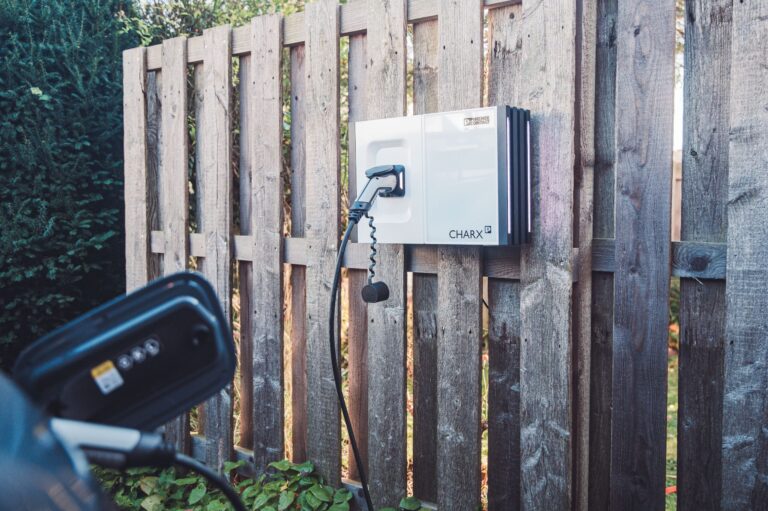
Convenience of AC charging with a permanently connected charging cable
A central element of AC charging is the AC power contactor, which enables the transfer of power from the charging station to the electric vehicle as soon as the charging controller releases the charging process. These contactors are widely available at reasonable prices, making them the preferred choice for private and commercial charging stations.
Optionally, an AC charging cable can be permanently attached to the home charger or charging station. This eliminates the need for users to bring their own mobile charging cable. The permanently installed AC charging cable is quickly ready for use at any time and cannot simply be stolen. For charging station operators, a permanently installed charging cable does mean slightly higher costs, but the added convenience when connecting the electric vehicle often outweighs this disadvantage. The charging cables are designed to be durable, robust and safe to drive over. AC charging cables are available for different performance classes, offering maximum flexibility and compatibility for different electric vehicles and infrastructures.
Flexibility through variable connection options of the AC charging cable for AC charging
Instead of a permanently installed charging cable, an infrastructure charging socket can also be installed at AC charging stations in accordance with the type 2 charging standard. This solution significantly increases flexibility, as users can bring their own mobile charging cable and use it at both private home chargers and public charging stations. The charging socket, also known as a socket or socket outlet, is not only more cost-effective, but also reduces the risk of damage and vandalism, which are more common with permanently installed charging cables. The infrastructure charging sockets can be equipped with additional technology such as temperature sensors or an LED status display. This allows the charging station to be tailored precisely to the respective safety, convenience and budget requirements without losing compatibility with different electric vehicles.
How does the charging current get into the electric vehicle? A clear explanation in the video.
Discover situaible products now
Here you will find a selection of relevant products – based on the topics and recommendations from our blog post.
